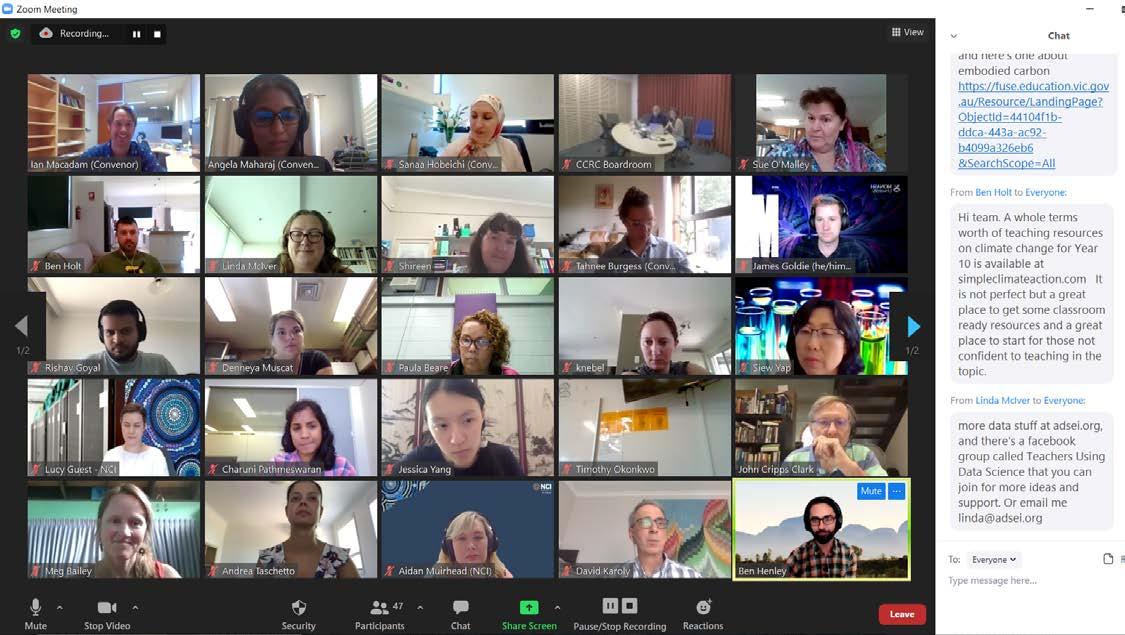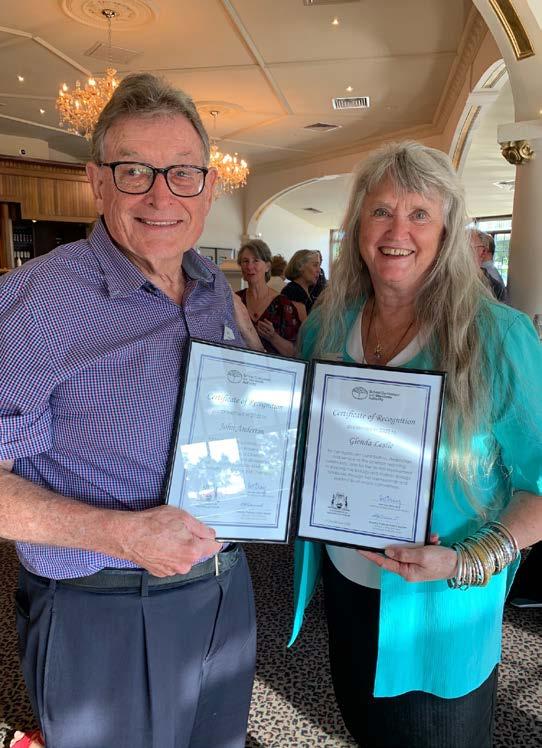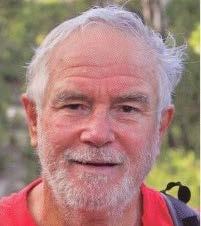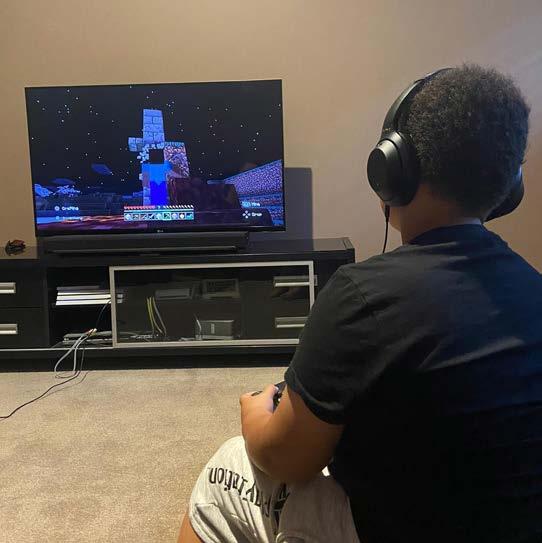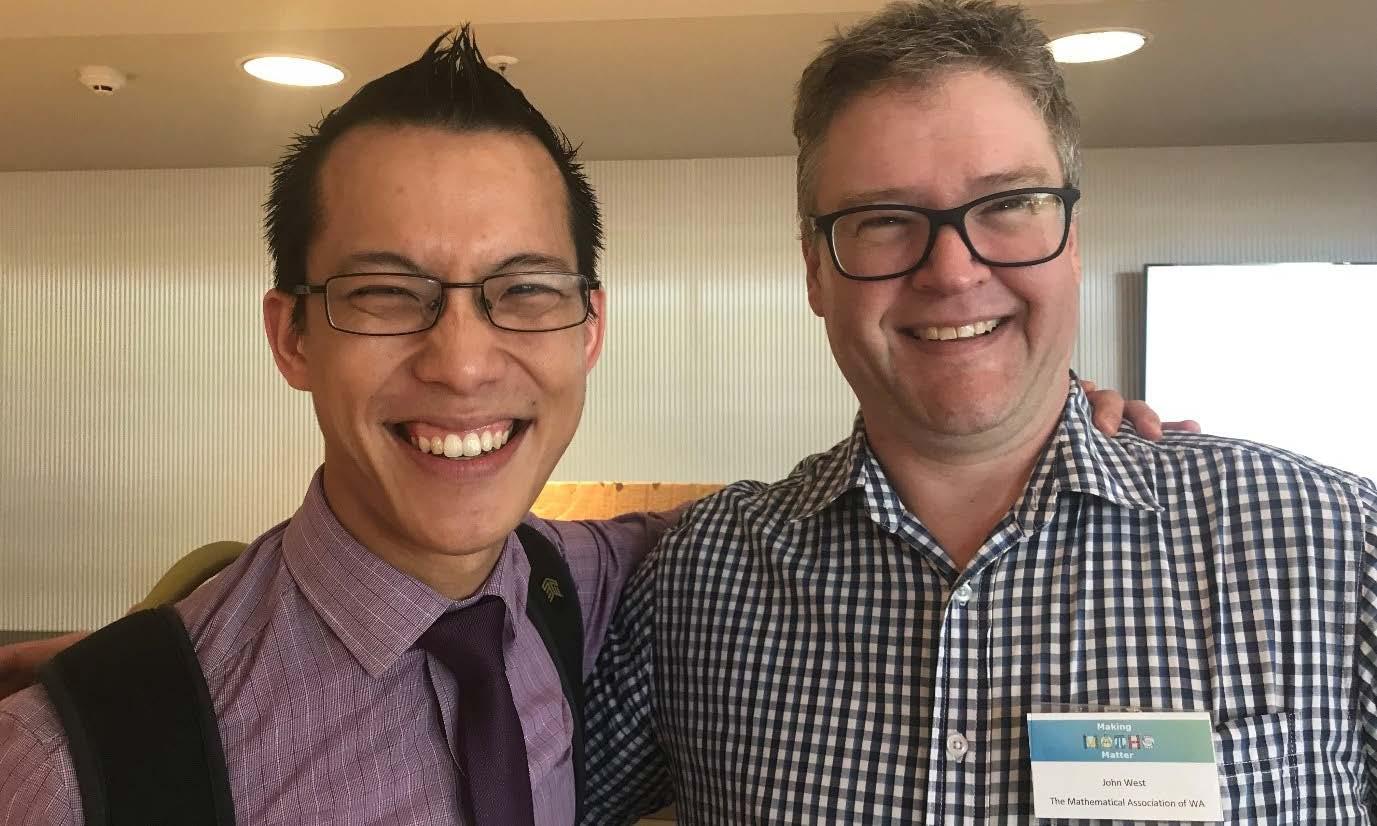
11 minute read
Teaching Science Through Art
from SCIOS March 2021 Volume 61
by STAWA
Yvonne Hunt
The idea for this PRISCI Pin-Up came from Beckenham Primary’s decision to run a Science Fair Instead of the Annual Art Fair.
Why do a Science fair? • To show case the science our students cover from K to 6 across the school in Earth Space Sciences to parents, teachers and community.
So why did Kate, our talented art specialist, opt back into the new Science Fair? • Kate had to teach art anyway so she suggested we meet and she follow my science topics! • We got together in a common Dott at the end of the year and I told Kate the names of the Primary Connections topics and VERY SPARINGLY explained them to her.
Earth Space Sciences is the topic to be covered as it suited the time of the year.
Australian Curriculum and Topic: Kindy
• S-CC2.2 Share observations with others as they explore their immediate world, using their five senses. • S-CC2.10 Observe and describe changes in sunlight, temperature, clouds and rain. Weather 1. The students found out about the weather by looking through paintings and the world around them. 2. They drew pictures of what we do on hot days and rainy days. 3. They look at weather symbols.
Art Supporting Steps
Weather • Kindy students drew weather symbols. • They painted over them with a dye wash. • The symbols were laminated and arranged on a branch as a mobile.
Art Example
Australian Curriculum and Topic: pre primary
Daily and seasonal changes in our environment, including weather, affect every day life.
Primary connections: Weather in my world • Lesson 1: Wondering about the weather • Lesson 2: Watching the weather • Lesson 4: What’s the weather like today? • Session 1: How does it feel?
Art Supporting Steps
What do we do when the sun is shining? We go surfing! • Painted backgrounds with blue dye • Use green and blue acrylic paints to paint paper • Tore paper to create waves and glued in layers onto the background • Created a collage sun using tissue paper and yellow and gold papers • Coloured surfboard with crayons • Glued surf board on photo
Art Example Australian Curriculum and Topic: Year 1
Observable changes occur in the sky and landscape.
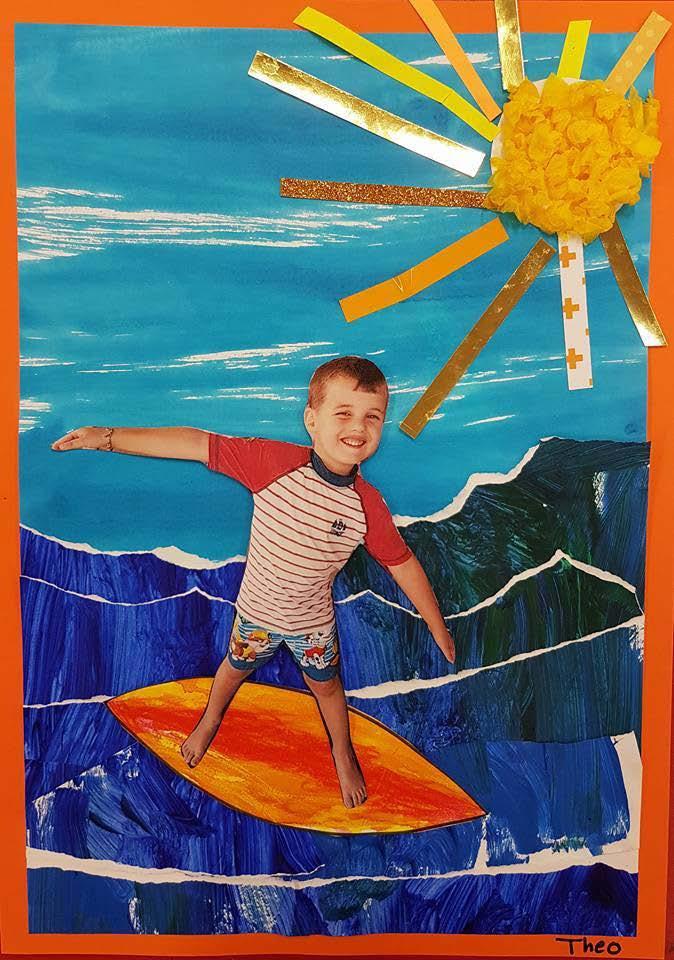
Primary connections: Up Down and all around • Lesson 1: I spy • Lesson 2: Garden grooming • Lesson 4: Seasonal traits
Art Supporting Steps
Room 1: Observing changes through seasons… Autumn inspired by Claude Monet. • Discussed the style of painting Monet used. • Students used acrylic paints and painted the sky using horizontal strokes and grass using vertical strokes. • Autumn leaves were painted using warm colours and dabbing technique. • Trunks were highlighted with white and larger trunks were painted in the foreground, smaller and thinner in the background. • Students drew themselves doing what they might do in the autumn leaves and cut out and glued on next to their pile of leaves.
Art Example
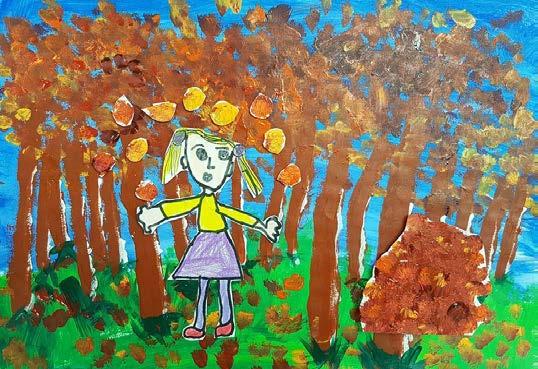
Art Supporting Steps
Room 2: Observing changes through seasons... Spring inspired by Margaret Preston. • Looked at real wildflowers from our school garden. Practised drawing wild flowers. • Students drew vases thinking about the lines and shapes they had observed and how to fill the space. • Students painted with water colour paints and, when dry, traced over lines with black marker. • They cut out and stuck on black paper.
Art Example Art Supporting Steps
Room 3: Observing changes through seasons Summer… inspired by Ken Done. • Completed a directed drawing based on paintings by Australian artist Ken Done. • Focus on objects in foreground being larger and smaller in the background. • Painted with watercolour paints. • Drew little yachts in three sizes and painted with acrylic paints, cut out. • Used mounting tape to attach the yachts making sure larger were in the foreground and smallest in the background.
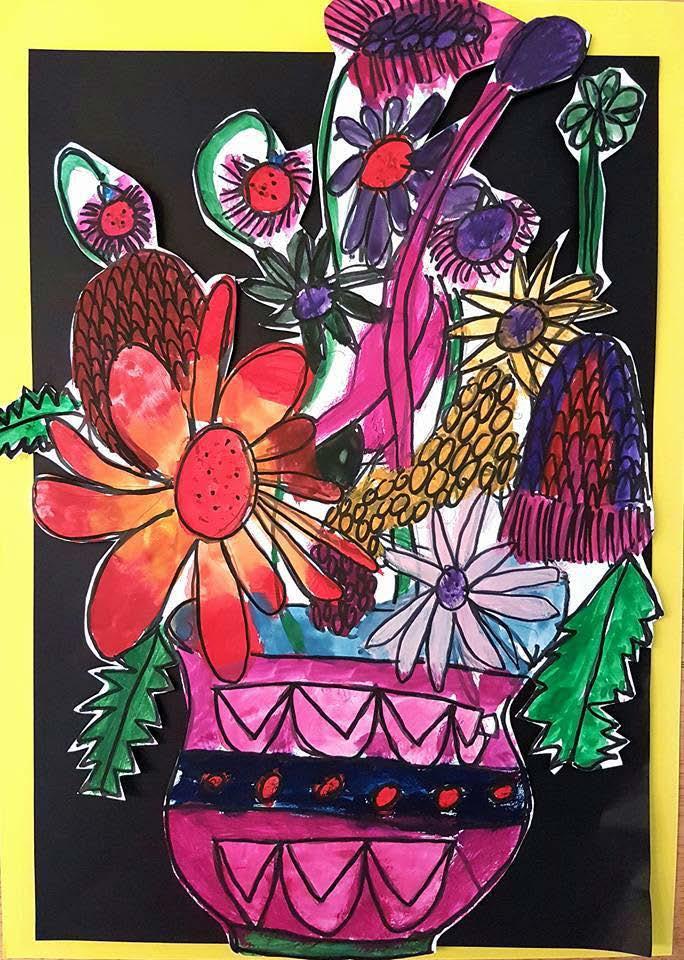
Art Example
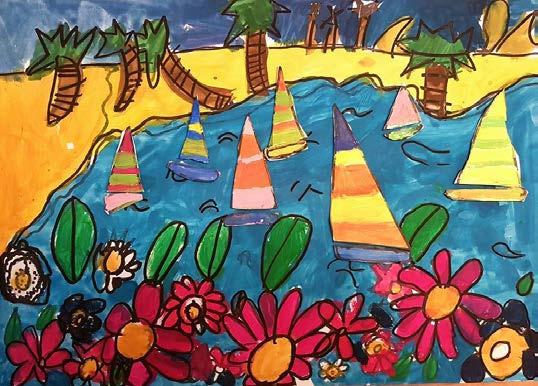
Australian Curriculum and Topic: Year 2
Earth’s resources including water are used in a variety of ways.
Primary connections: Water Works • Lesson 1: Wondering about water • Lesson 3: Rain, rain
Art Supporting Steps
Room 4: Water is one of the earth’s resources... Where does it come from? Rain! • The students drew themselves holding an umbrella and painted with watercolor paints and cut out when dry. The focus was on drawing the bodies in proportion • Sequins, buttons and ribbons were added. • We used pipettes from the science room to drip blue dye down the page to make rain. • Students drew backgrounds that we cut out and stuck onto the rain page, and finally stuck the pictures of them in the foreground.
Art Example Art Supporting Steps
Room 5: Water is one of the earth’s resources… Where does it come from? Rain! • The students drew themselves holding an umbrella and painted with watercolour paints and cut out when dry. The focus was on drawing the bodies in proportion. • The background used was a wax resists technique. White crayon was used to draw rain and puddles and coloured wax crayons for the rainbow. • Blue dye was painted over the crayon. • People pictures were stuck on the background.
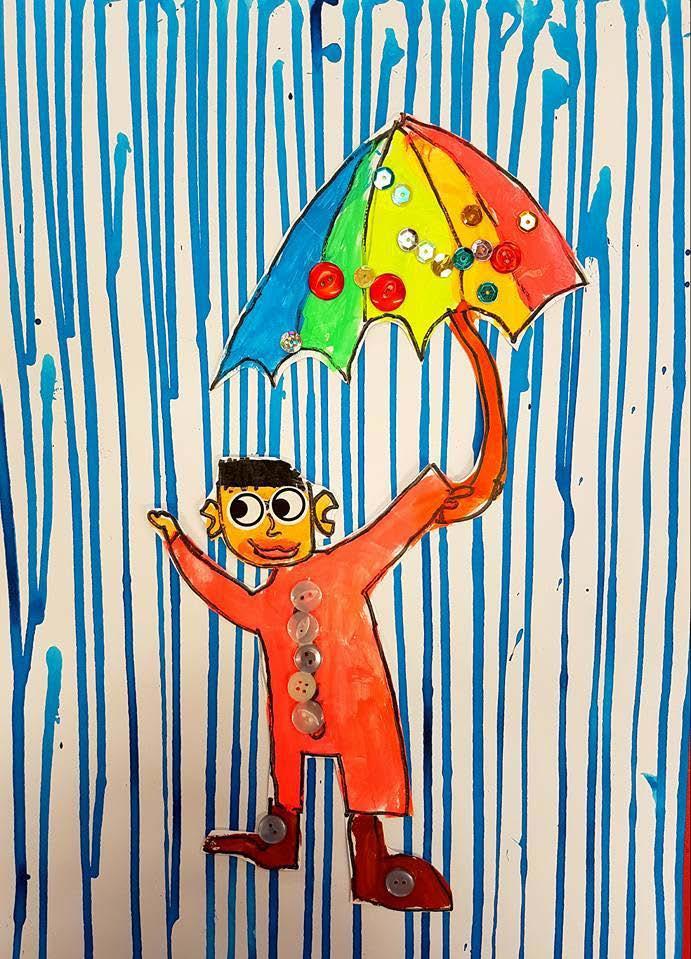
Art Example
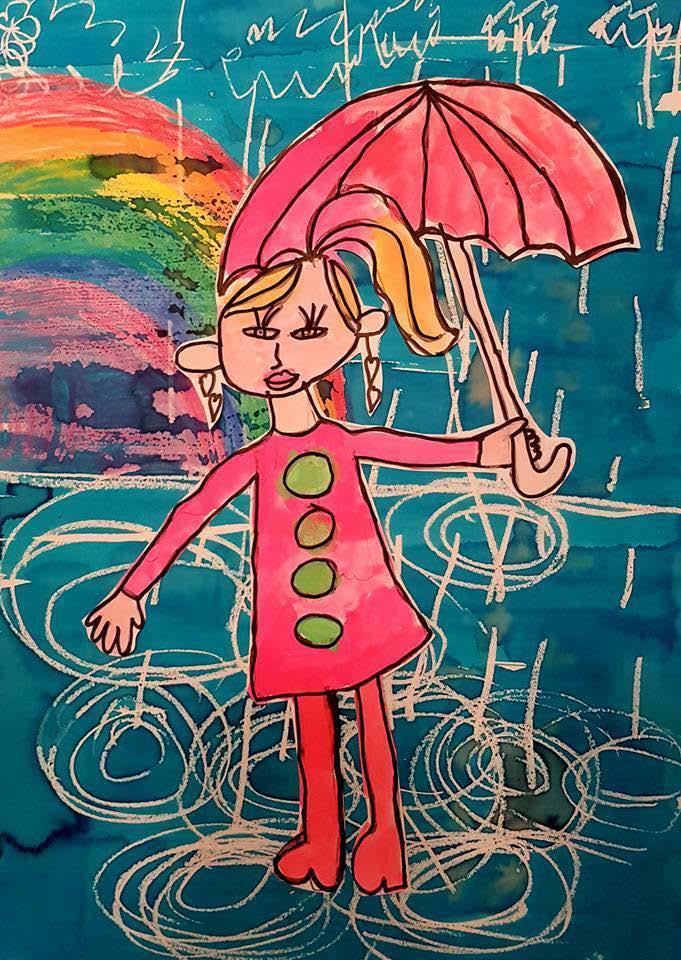
Art Supporting Steps
Room 6: Water is one of the earth’s resources… Where does it come from? Rain! • The students drew themselves holding an umbrella and painted with watercolour paints and cut out when dry. The focus was on drawing the bodies in proportion. • Different blue acrylic paints were used to paint the paper and when dry, raindrops were cut from the paper. Students also painted paper that they cut cloud shapes from.
Art Example Australian Curriculum and Topic: Year 3
Earth’s rotation on its axis causes regular changes, including night and day.
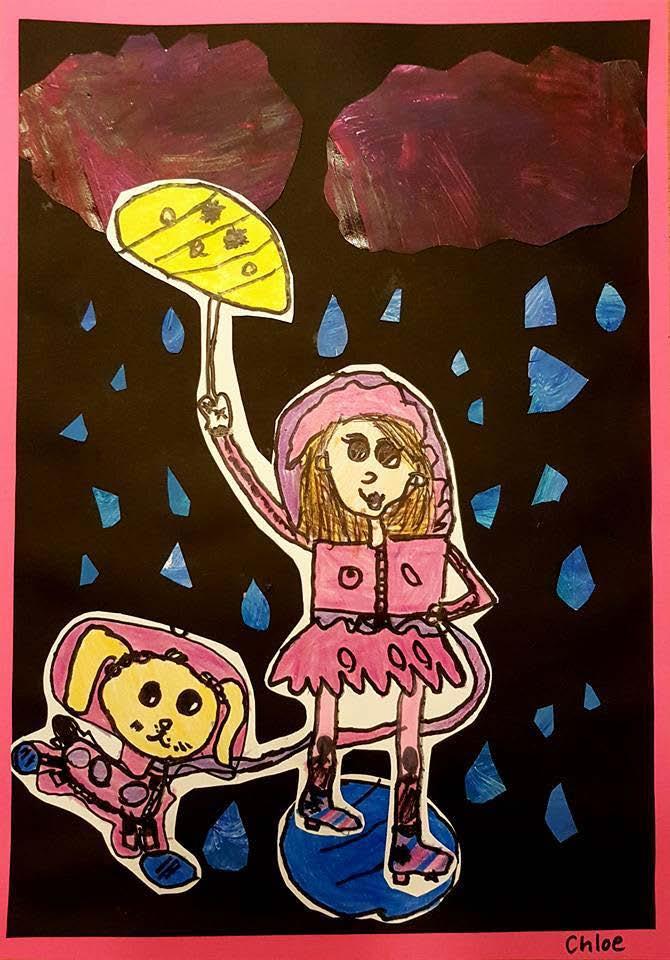
Primary connections: Day and night • Lesson 1: Night and day notions • Lesson 3: Shadows at play
Art Supporting Steps
Room 7: Shadows are created when a light source shines on an opaque object like me… “Me and my shadow” • The students drew themselves doing something they love to do, colours with crayons and painted over with dye. • When drying, the figure was cut out and traced, around on black paper and cut out to create a shadow. • Appropriate backgrounds were drawn and painted with edicol dye. • Shadows were stuck on to the background and the action figure glued on top of the shadow.
Art Example
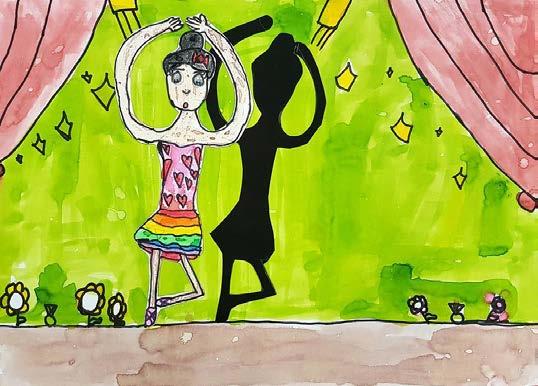
Art Supporting Steps
Room 8: Shadows are created when a light source is shines on an opaque object. Shadow Puppet Fairy Tales: • We looked at the tradition of shadow puppets in various cultures and watched some shadow puppet plays on Youtube. • In small groups, students decided on a fairytale and determined who would create each character and the backgrounds. • Students drew characters and objects on black paper, cut out and attached to skewers and then practiced their plays.
Art Example Art Supporting Steps
Room 17: Earth’s rotation on its axis causes day and night. Stylised representation of day and Night: • Divided A3 page diagonally. In one corner draw a sun with lines radiating to the centre line and create patterns in each segment. • On the other half, draw a crescent moon and stars. • Use warm colours to paint the day side and cool colours to paint the night side. • When dry, retrace lines with permanent marker and add gold glitter to the sun side and silver glitter to the moon.
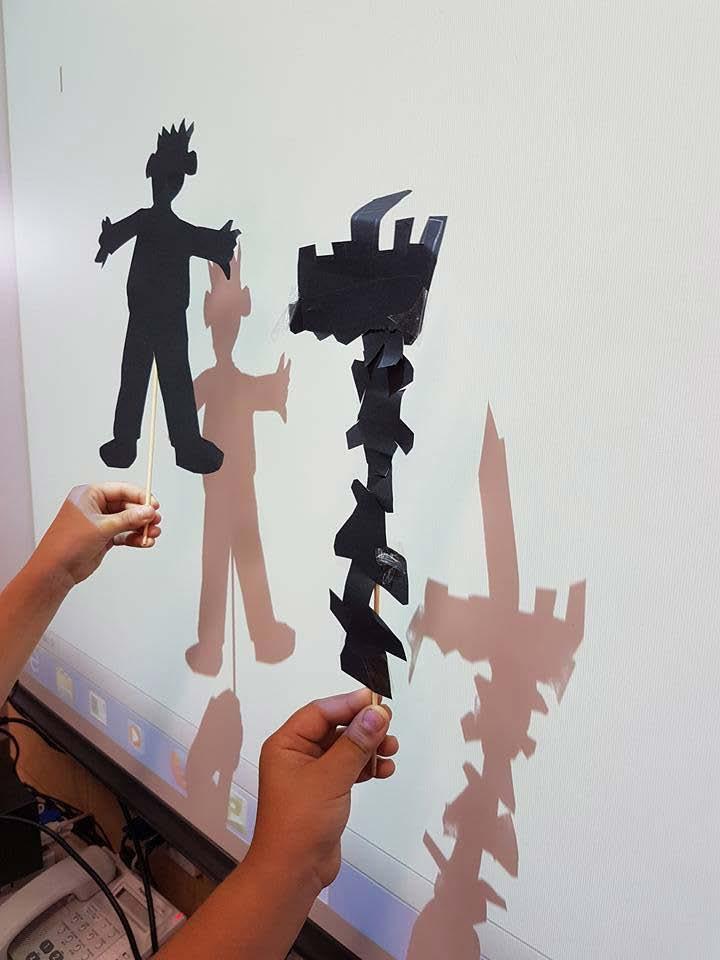
Art Example
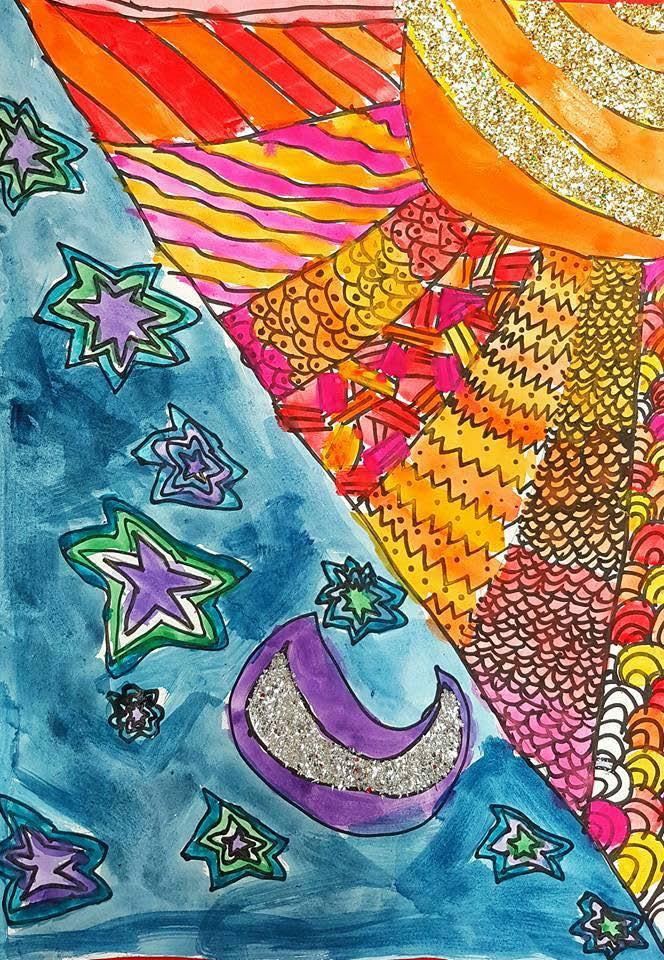
Australian Curriculum and Topic: Year 4
Earth’s surface changes over time as a result of natural processes and human activity.
Primary connections: Earth beneath your feet • Is the topic we covered in the term however it does not really cover recycling?
However as part of a larger question that was posed out side the science room our question was: How can we look after Planet Earth?
This is the point Kate chose to work on in her art lessons.
Art Supporting Steps
How has man contributed to changes on earth? How can we help prevent the negative changes caused by pollution? Recycling! • Each student in year 4 was given the challenge of creating a work of art out recycled materials. We looked at lots of ideas using plastic containers and bottles, cardboard, old tyres, newspaper, bottle tops. • Students were also given free reign of all of the left over bits and pieces in my art room cupboard • Parents were invited to come in during lessons to help their child. • The focus was on the process of construction with students able to use a drill, hot glue gun, hammer and nails. • This turned out to be the most rewarding activities ever because the students were so absorbed with what they were making, they solved construction problems along the way and were really proud of their creations.
Art Example
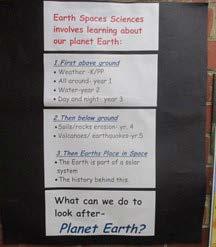
Australian Curriculum and Topic: Year 5
The earth is part of a system of planets orbiting around a star (the sun).
Primary Connections: Earths Place in Space • Lesson 1: Model arguments • Session 1: Eratosthenes’ epiphany • Session 2: Centered on the Sun • Lesson 6: Solar System scientists • Session 1: Dealing with data • Session 2: Size matters
Art Supporting Steps
Room 10: Where are the planets in the solar system in relation to each other? • We looked at videos of the planets orbiting the sun and watched some clips about the features of the planets. • Students had to draw the planets and try to get the sizes of each planet right in comparison to the next. • Using oil pastels, students chose appropriate colours for each planet and blended colours together. • Darker pastels were used on one side to create the illusion of form-sphere.
• Backgrounds were created by splattering white paint onto a black background with a toothbrush. • Planets were attached using mounting tape in the correct order.
Art Example
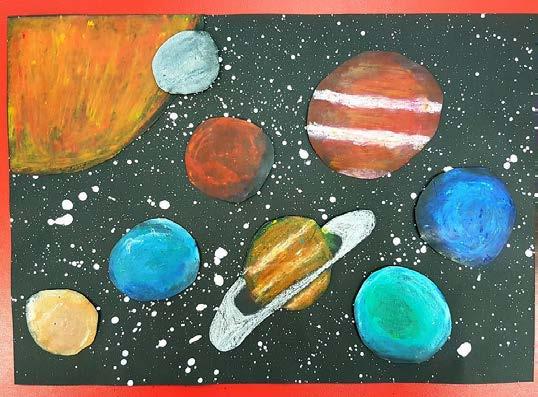
Art Supporting Steps
Room 11: The Sun is a powerful force. Investigate the heliotropic effect with special sun colour paint. The heliotropic effect is when something moves towards the Sun.
Heliotropic cushions: Discuss what heliotropic means • Students worked in pairs to paint fabric using Sun Coloured heliotropic paint then placed stencil son the wet fabric and placed them in the sun to dry. • Students observed the way the paint moved from under the stencil towards the light leaving the fabric under the stencil paler. • Fabric was sewn into cushions.
Australian Curriculum and Topic: Year 6
Sudden Geological changes or extreme weather conditions can affect the earths surface.
Primary Connections: Creators and destroyers • Lesson 2: Eruptions • Session 2: Ready to research
Primary Connections: Earthquake explorers • Lesson 4 • Session 1: Plates on the move
Art Supporting Steps
Room 12: Sudden geological changes such as earthquakes can cause tsunamis. Major focus was the on the Japanese artist, Hokusai, and his famous print “Great wave off Kanagawa”. • We studied Hokusai’s work and talked about his method of wood block printing. • Students used the famous artwork to draw their own version. The focus of the drawing was using lines to create the movement and power of the waves. • Students then used watercolour pint and had to show different intensities of colour by varying the amount of paint they mixed with water.
Art Example Art Example
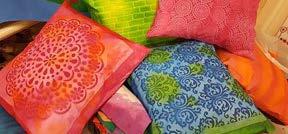
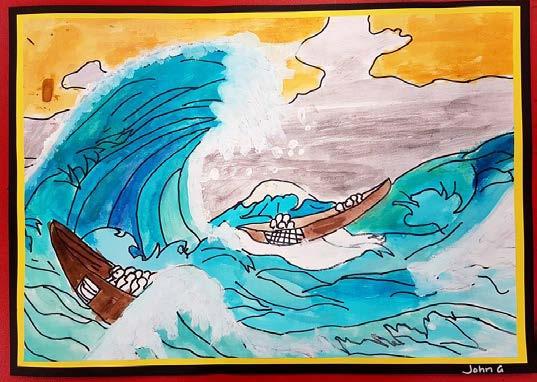
Art Supporting Steps
Room 13: Sudden geological changes such as earthquakes can cause tsunamis. Major focus was the on the Japanese artist, Hokusai, and his famous print “Great wave off Kanagawa”. • We studied Hokusai’s work and talked about his method of wood block printing. • Students used the famous artwork to inspire a linocut design. • Students then used linocut tools to cut out their design. The focus of the design was using lines to create the movement and power of the waves. • Prints were made from the linocuts. Students made 3 or 4 prints and learnt how artists number their prints. • The best prints were chosen for the science fair and boarded with Japanese paper.
Art Example
Science and art specialists Yvonne Hunt and Kate Driscoll
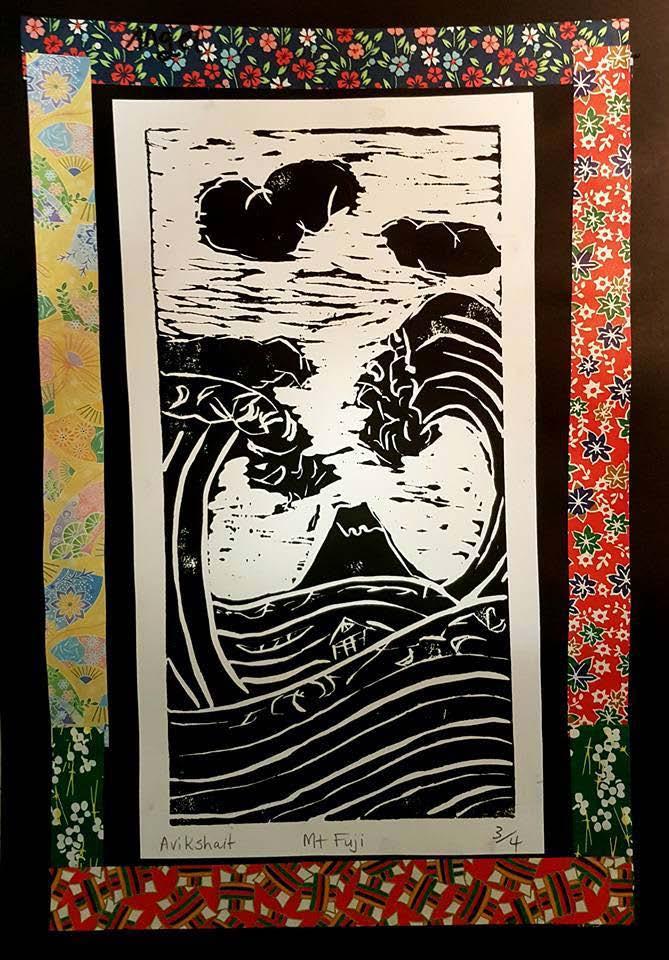
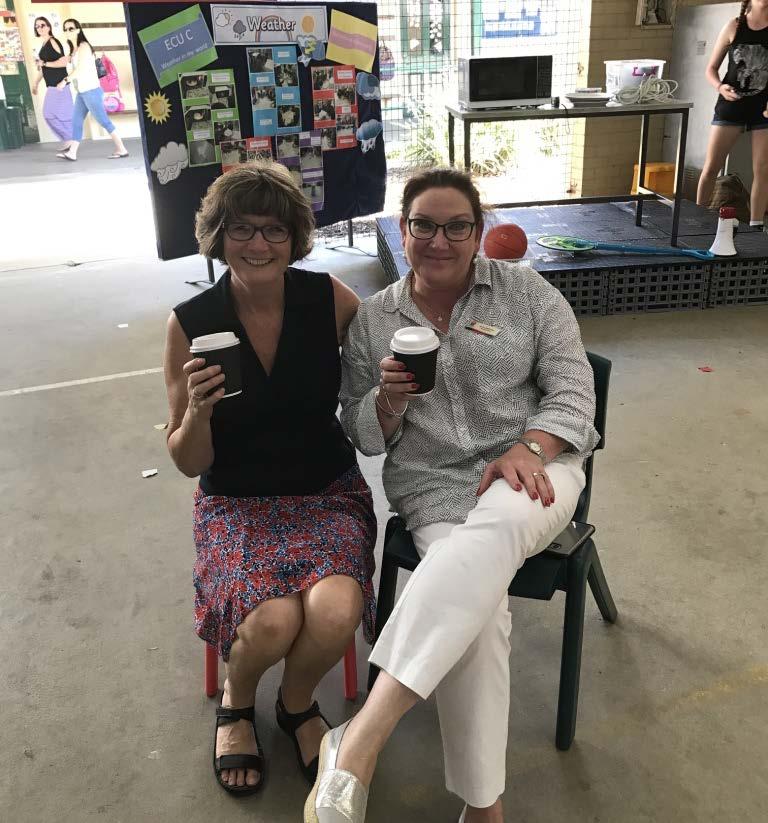
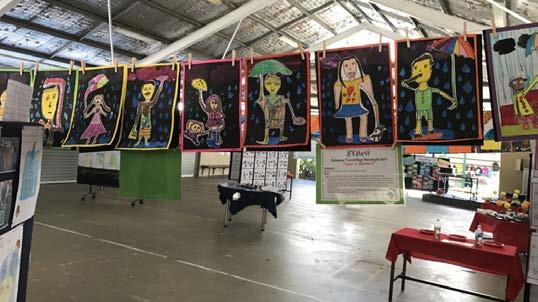
Science fair with art around science displays
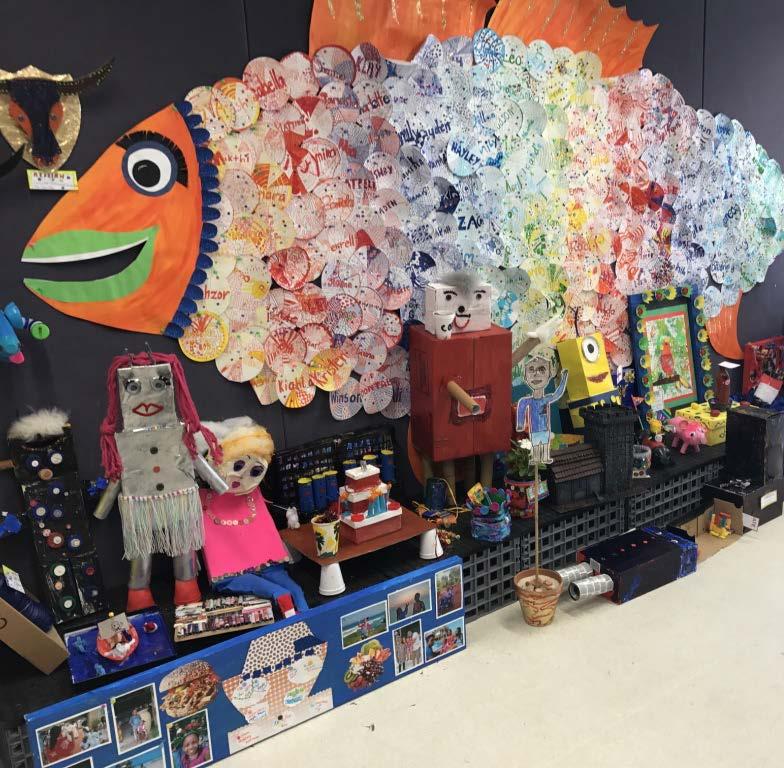
Recycled Art

